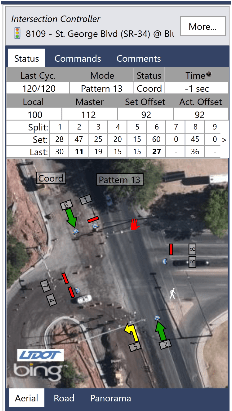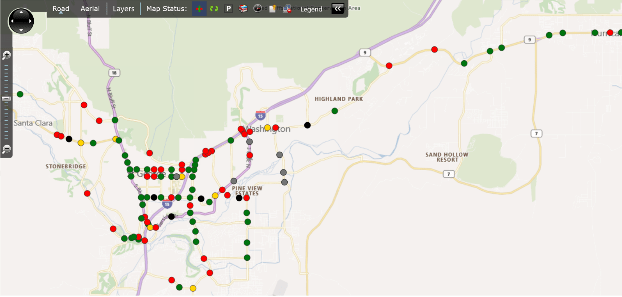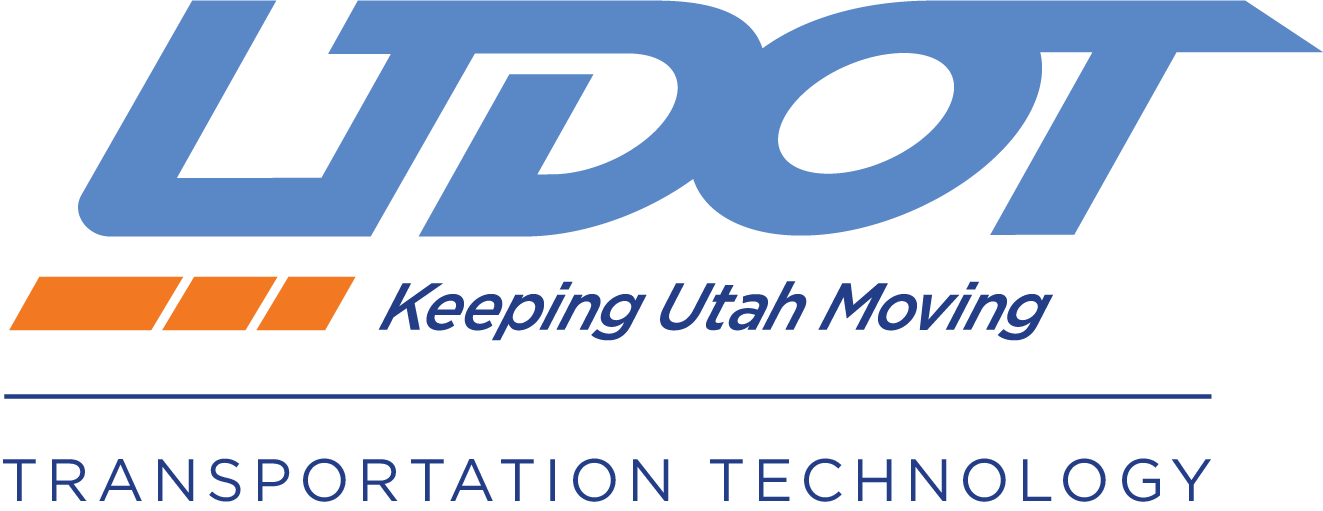Traffic Signal Operations
And Innovations
OVERVIEW
As of July 2022, UDOT operates and maintains 1328 traffic signals at freeway interchanges, along arterial roads, and at intersections along state roads throughout Utah. An additional 967 traffic signals are managed by 54 local jurisdictions in Utah. To improve operations for all drivers, 96% of these 2,295 traffic signals are connected to UDOT’s fiber optic network and managed by a single central software system. UDOT and 52 of the 54 jurisdictions are partners to ensure that world-class signal operations benefit the traveling public, no matter where in Utah they are. To monitor performance UDOT helped develop the Automated Traffic Signal Performance Metrics (ATSPM) program – a system that monitors signal operations, provides warnings when systems are not functioning properly and allows UDOT engineers to improve operations in real time.
BENEFITS OF TECHNOLOGY
Safety is a primary strategic goal for UDOT, specifically “zero crashes, injuries and fatalities.” Efficient traffic signal operations encourage a good flow of traffic and prevent crashes. Two recent improvements that specifically promote safety are:
- Reflective backplates: Traffic signals are sometimes difficult to see at night because the lights compete with other light sources (streetlights, commercial signs, etc.). UDOT and many of its partners have placed backing plates outlined in yellow reflective tape around traffic signals, making them easier to see in the dark.
- Heat tape: Low-power, long-life LED lights are now used in most of UDOT’s traffic signals. During the winter, these lights sometimes accumulate snow because the LED lamps do not produce much heat. UDOT has recently found that installing heat tape around the traffic signal visor can be used to melt the snow. This heating element is activated remotely only when needed.
Another strategic goal of UDOT’s is to “optimize mobility.” Streamlined operations of traffic signals optimize the travel of vehicles on our roadways. One tool UDOT uses is the ATSPM program, a software system that gathers very detailed data at traffic signals and provides an analysis of whether traffic signals are timed so that most cars arrive during a green light, whether most cars make it through a left-turn cycle, and whether the green light lasts long enough. UDOT engineers can remotely modify timing of the signal to improve these metrics in real time.
ATSPM was originally created by Purdue University and the Indiana Department of Transportation, but it was developed, expanded and shared nationwide by UDOT engineers.
Other mobility benefits of the traffic signal system include:
- Because UDOT partners with 52 local jurisdictions on traffic signal operations, corridors that cross through multiple cities can be synchronized to help traffic move smoothly.
- UDOT is implementing connected vehicle (CV) technology that allows buses, snowplows, and other fleet vehicles to communicate information with the traffic signal. This technology can provide a little extra green time to allow late buses to get back on schedule and can turn a light green to keep snowplows and emergency vehicles moving.
WHERE THE TECHNOLOGY IS DEPLOYED
UDOT operates and maintains traffic signals on state roads throughout Utah in urban, suburban and rural areas. Local city and county partners operate traffic signals in their jurisdictions and partner with UDOT on those operations. An example of the traffic signal locations in southeastern Utah, accessed through the central software management system, is shown below:


Nearly all of these traffic signals have ATSPM systems installed, and the data generated is available on a public-facing website at the UDOT Automated Traffic Signal Performance Measures website.
RESEARCH
TPF-5(377), Enhanced Traffic Signal Performance Measures (https://rip.trb.org/View/1505786)
TPF-5(470), Traffic Signal Change and Clearance Interval Pooled Fund Study (https://rip.trb.org/view/1758857)
TPF-5(483), Integration of New Traffic Signal Actuation Concepts using Enhanced Detector Information (https://www.pooledfund.org/Details/Study/710)
NCHRP 17-109, Crash Modification Factors for Automated Traffic Signal Performance Measures (https://apps.trb.org/cmsfeed/TRBNetProjectDisplay.asp?ProjectID=5158).
Evaluating Signal Performance Measures: A Longitudinal Analysis (UT20.308).
Identifying Near-misses (Including Red-light Running) and Reducing the Conflict Through D-FYA at Signalized Intersections Using Lidar Sensors (UT22.309).
Utilizing LIDAR Sensors to Detect Pedestrian Movements at Signalized Intersections (UT21.301).
